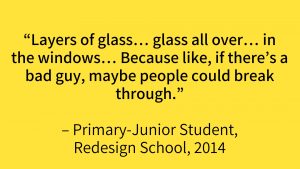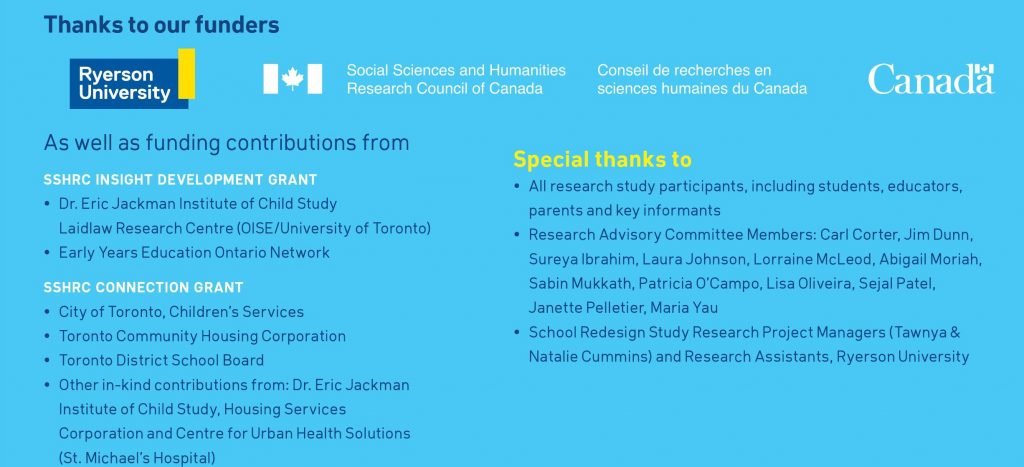What do students and teachers in a Canadian inner-city neighbourhood think about safety within the context of neighbourhood revitalization and school redesign?
Method
This qualitative study investigated student and teacher perceptions of safety while living or working in a neighbourhood undergoing revitalization while a local school redesign initiative also took place. Focus groups took place at two school sites that were impacted by the recently completed school redesign initiative: (1) the newly redesigned school (RS), and (2) a neighbourhood feeder school (FS1).
Violence and Safety in Schools
At RS, both returning and new students generally felt that the school provided them with an enhanced sense of security, in comparison to their feelings of safety within the community at large. However, a large number of students reported that the level of safety decreased in RS, partly due to perceived greater permeability of the building and grounds, and partly due to the violent behavior of some individuals in the neighbourhood.
Bullying & Fights in the School Setting
Given the unique circumstances relating to the ongoing construction work and changing structure of the neighbourhood, including disruption of place based familiarity and social bonds, new relationships and situations evolved that may have fostered bullying and victimization, as bullying was seen to be a pervasive problem amongst students in all the neighbourhood schools. Fights in the school setting were also reported by a number of students.
Gang Activity, Neighbourhood Crime & Community Safety
A number of junior and intermediate students in both FS1 and RS spoke about gang activity in the community. Students’ perceptions of gang activity in the neighbourhood were mixed, where some felt the presence of gangs had diminished, and others felt gangs in the neighborhood were active. Some junior and intermediate students also remarked on issues of territory in the neighborhood and rivalry between schools, with the different groups of students coming together in RS and FS1 due to school redesign. A number of students at both schools believed that the rate of crime in the neighborhood had not been reduced as a result of revitalization and the ongoing construction work itself raised concerns about safety among students.
What are the takeaways from this study? Students’ feelings of safety are related both to their social environment and the built environment. Student and staff voices matter and should be included in both neighbourhood redevelopment and school redesign initiatives.
This report is based on focus groups with students (aged 4 to 13), divided into Primary, Junior, and Intermediate grade groupings, and focus groups with teachers in 2013 and 2014.
Click here to read more about student and school staff perspectives on safety during the school redesign.
To read more about the School Redesign and Neighbourhood Redevelopment: A longitudinal study of education success and well-being study,click here.
Document citation: Patel, S., Ranjbar M., Cummins, T., & Cummins, N. (2021). Safety and inner city neighbourhood change: Student and teacher perspectives. Education and Urban Society, 1-22. doi: https://doi.org/10.1177/00131245211004553.





 At the beginning of the transition, students spoke about an initial divide between the new
At the beginning of the transition, students spoke about an initial divide between the new 






